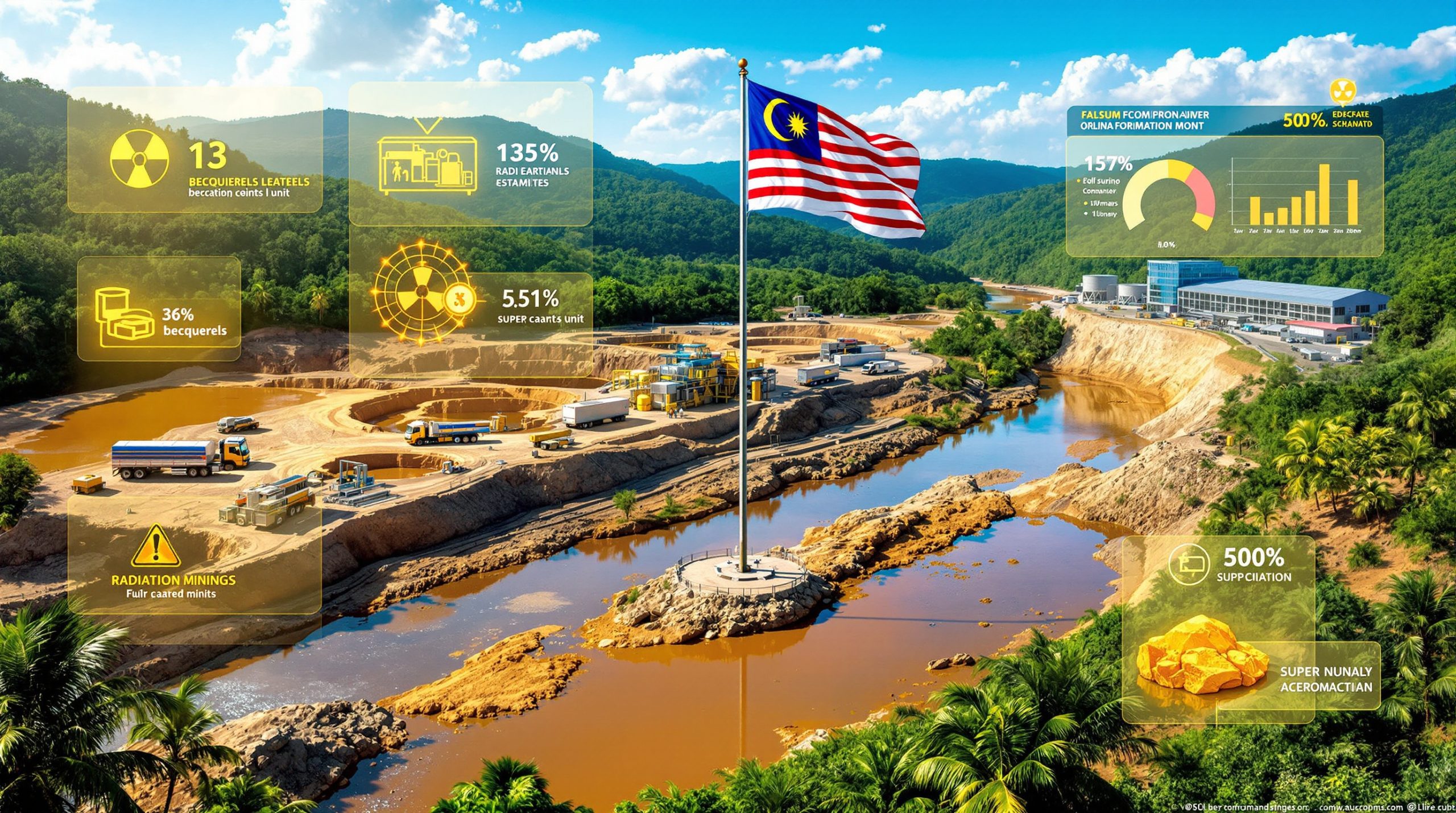BHP-China Iron Ore Standoff: Analyzing the Global Market Power Struggle
The ongoing dispute between mining giant BHP Group and China's state-run iron ore buyer has captured global attention as it represents a fundamental shift in how the world's largest consumer of iron ore is approaching its relationship with major suppliers. This standoff, which emerged in late September 2025, carries significant implications for global iron ore price trends and the broader geopolitical landscape of resource trade.
How Did the BHP-China Iron Ore Dispute Begin?
Origins of the Pricing Conflict
The standoff traces its roots to a fundamental disagreement over pricing mechanisms and contract structures. China Mineral Resources Group (CMRG), established in 2022 specifically to strengthen China's negotiating position against major suppliers, took the significant step of suspending purchases of BHP's dollar-denominated seaborne cargoes in late September 2025.
This move marked an escalation from CMRG's earlier, more limited suspension targeting only Jimblebar blend fines, demonstrating a graduated approach to applying pressure on the mining giant. The suspension represents China's most aggressive attempt yet to gain leverage in negotiations that have historically favored suppliers.
CMRG's Strategic Objectives
At its core, CMRG aims to consolidate China's enormous purchasing power by signing long-term contracts on behalf of the country's major steel mills. This centralized approach would potentially enable Beijing to negotiate volume discounts and preferential terms that were previously unavailable when mills negotiated individually with major suppliers like BHP, Rio Tinto, and Vale.
While CMRG lacks formal authority over the commercial operations of individual mills or traders, its recommendations have effectively become binding due to the group's substantial political influence and strategic importance within China's governmental hierarchy. This institutional backing gives CMRG unprecedented leverage in negotiations.
What Are the Immediate Market Impacts of the Standoff?
Current Shipping and Supply Dynamics
Despite CMRG's directive to suspend new purchases, BHP has experienced minimal disruption to its Chinese shipments thus far. This limited impact stems primarily from timing—the company had already sold most of its November and December 2025 iron ore allocation before the suspension took effect.
In a strategic counter-move, BHP offered approximately 50 cargoes to international traders and select Chinese entities immediately after CMRG announced its purchasing suspension. This quick redistribution helped maintain BHP's sales volume in the short term while signaling the company's ability to find alternative buyers if necessary.
Timeline of Potential Disruptions
The real impact of CMRG's restrictions will likely become apparent only when BHP begins selling January 2026 deliveries, a process starting in November 2025. This interval provides BHP with negotiating leverage and breathing room to potentially resolve the dispute before significant volume disruptions occur.
Market analysts suggest this timeline creates a natural negotiation window where both sides can assess their positions without immediate financial pressure. The table below outlines the expected progression of market developments:
| Timeline | Expected Market Development |
|---|---|
| October-December 2025 | Limited impact as most shipments already contracted |
| November 2025 | BHP begins selling January 2026 deliveries |
| December 2025 | First potential signs of volume redirection |
| January 2026 | First major potential disruption to traditional BHP-China shipment patterns |
| Q1-Q2 2026 | Possible resolution or escalation depending on negotiation progress |
Why Is China Pursuing This Strategy Now?
China's Market Position and Frustrations
As the world's largest iron ore consumer, China has long sought greater influence over pricing in a market dominated by just three major suppliers – BHP, Rio Tinto, and Vale. Despite consuming over 70% of seaborne iron ore, China has historically had limited success in dictating price terms.
This imbalance has been a source of ongoing frustration for Chinese policymakers, who view their country's dominant consumption position as inconsistent with their limited influence over pricing mechanisms. The creation of CMRG represents Beijing's most coordinated attempt to address this perceived imbalance.
Strategic Significance of CMRG
The establishment of CMRG represents Beijing's most coordinated attempt to reshape iron ore market dynamics. Marina Zhang, researcher at the University of Technology Sydney's Australia-China Relations Institute, explains that China's motivation extends beyond simple economic calculations: "China wants to assert control over pricing after years of frustration at being the world's biggest buyer, but still having little say over the price. It's also a signal to the rest of the world that China intends to play by new rules."
This statement highlights the dual purpose of China's strategy—securing better economic terms while simultaneously demonstrating China's growing confidence in reshaping global commodity markets according to its preferences.
How Are Global Shipping Markets Responding?
Impact on Freight Rates and Vessel Demand
The suspension of new BHP cargo purchases has significantly affected the capesize vessel market, which primarily transports iron ore. Freight rates have declined as uncertainty about future shipments causes hesitation among charterers.
This uncertainty has created a ripple effect throughout maritime shipping, with vessel owners seeking long-term contracts to hedge against potential disruptions. The typical Australia-to-China routes that form the backbone of the iron ore trade face particular pressure as market participants try to gauge the duration and severity of the standoff.
Alternative Cargo Routing Patterns
International traders have begun exploring alternative destinations for BHP cargoes that would typically go to China. This exploration has focused primarily on:
- Steel mills in Japan seeking high-quality ore for specialized production
- South Korean manufacturers looking to secure supply amid uncertainty
- Growing steel producers in Vietnam and other Southeast Asian nations
- European mills seeking to diversify supply sources
These redirections could potentially reshape traditional shipping routes and create temporary regional supply imbalances as the market adjusts to new trading patterns.
What Are the Political Dimensions of the Standoff?
Australian Government Response
Australian Prime Minister Anthony Albanese has expressed desire for a swift resolution, highlighting the economic interdependence between the two nations: "Iron ore makes a major contribution to China's economy but also to Australia's."
The government is closely monitoring the situation given iron ore's critical importance to national export revenues. Iron ore remains Australia's largest export commodity, generating substantial tax revenue and supporting thousands of jobs across Western Australia in particular. Australia's iron ore leadership position makes this dispute particularly significant for the country's economy.
Strategic Resource Nationalism
The standoff reflects broader trends of resource nationalism and strategic commodity control, with major economies increasingly viewing critical minerals and metals through a national security lens rather than purely commercial considerations.
This shift in perspective has accelerated in recent years as countries recognize the strategic importance of key resources in manufacturing, technology development, and economic security. The BHP-China standoff represents one of the most visible manifestations of this trend in global commodity markets.
How Might This Dispute Be Resolved?
Potential Compromise Scenarios
Several potential resolution pathways exist, including:
- Graduated pricing tiers based on volume commitments that provide discounts for larger purchases while maintaining basic price mechanisms
- Modified contract structures with partial centralization that preserve some flexibility for individual mills
- Hybrid pricing models incorporating both spot and long-term components to balance price stability with market responsiveness
- Alternative benchmarking systems that give Chinese buyers more input into price formation
Finding a compromise will likely require both sides to prioritize long-term stability over short-term advantages, recognizing the mutual benefits of a predictable trading relationship.
Negotiation Leverage Assessment
Both sides maintain significant leverage in the negotiations:
| BHP's Leverage Factors | China's Leverage Factors |
|---|---|
| Multiple alternative markets for high-quality ore | World's largest iron ore consumer with unmatched volume |
| High-quality ore specifications demanded by premium steelmakers | Ability to source from alternative suppliers including Rio Tinto and Vale |
| Established infrastructure and reliability of supply | Strategic stockpiling capabilities to weather short-term disruptions |
| Long-term supply relationships with individual Chinese mills | Potential to accelerate domestic production despite quality limitations |
| Support from Australian government concerned about export revenues | Political will to endure short-term pain for long-term structural change |
What Are the Long-Term Implications for Global Iron Ore Markets?
Potential Market Structure Changes
The BHP-China iron ore standoff could accelerate several structural changes in global iron ore markets:
- Greater emphasis on direct supplier-consumer relationships with more transparent terms
- Development of alternative pricing benchmarks that better reflect regional demand variations
- Increased investment in supply diversification by both producers and consumers
- Acceleration of China's domestic iron ore production despite quality limitations
- Enhanced focus on value-added products rather than raw commodity pricing
These changes would represent the most significant evolution in iron ore market structure since the shift from annual benchmarks to more flexible pricing mechanisms over a decade ago.
Future Supply-Demand Balance
Market analysts anticipate that regardless of the immediate outcome, the dispute signals a fundamental shift in how iron ore contracts will be negotiated in the future. This could lead to:
- More regionalized pricing mechanisms reflecting local supply-demand dynamics
- Greater price volatility as centralized purchasing creates larger market movements
- Accelerated investment in alternative iron sources including recycling and hydrogen-based production
- Strategic diversification by both suppliers and consumers to reduce concentration risk
- Enhanced importance of relationship management alongside pure price considerations
The potential iron ore price decline could accelerate if this standoff continues into 2026, particularly as various iron ore demand insights suggest possible oversupply in the market.
How Does This Dispute Compare to Historical Iron Ore Pricing Conflicts?
Evolution of Iron Ore Pricing Models
The current standoff represents the latest chapter in the evolution of iron ore pricing mechanisms, which have transformed dramatically over the past two decades. The market has moved from annual benchmark negotiations to quarterly pricing and increasingly toward spot market dominance.
This progression reflects the growing liquidity and transparency in iron ore markets, but also highlights the ongoing tension between suppliers seeking price stability and consumers wanting flexibility. The current dispute could potentially reverse some aspects of this evolution by reintroducing more structured, long-term contracting.
Previous Market Power Struggles
Historical precedents exist for such standoffs, though the creation of CMRG represents a more institutionalized approach to buyer consolidation than previous attempts. Past conflicts have typically resulted in compromises that gradually shifted pricing power without dramatic market disruptions.
The most notable previous conflict occurred in 2010 when the industry abandoned the 40-year-old annual benchmark system in favor of quarterly pricing—a change that initially favored suppliers but eventually created more market responsiveness. The current dispute could represent an equally significant inflection point in market structure.
What Are the Broader Implications for Resource Sector Relationships?
Template for Other Commodity Markets
The outcome of this standoff could serve as a template for similar buyer consolidation strategies in other commodity markets where China is a dominant consumer. Potential candidates include:
- Copper, where China consumes over half of global production
- Bauxite and alumina for aluminum production
- Nickel and cobalt for battery manufacturing
- Various critical minerals essential for technology manufacturing
Chinese policymakers are likely watching the iron ore negotiations closely to assess the effectiveness of centralized purchasing before potentially expanding this approach to other strategic commodities. The potential tariffs impact investments in the resources sector may also influence how these negotiations proceed.
Investment Implications for Mining Majors
Major mining companies may need to reassess their long-term investment strategies and customer diversification plans in response to this more coordinated approach from Chinese buyers. This could potentially:
- Accelerate development of resources in politically aligned jurisdictions
- Enhance focus on product customization and value-added services
- Drive greater vertical integration to capture more value
- Increase emphasis on environmental and social credentials as differentiators
- Boost investment in technological innovation to reduce production costs
FAQ: Key Questions About the BHP-China Iron Ore Standoff
How significant is BHP's iron ore supply to China's steel industry?
BHP supplies approximately 20% of China's iron ore imports, making it a critical but not irreplaceable supplier. China's steel industry depends heavily on imported iron ore, with domestic supplies meeting only about 20% of total demand despite being the world's fourth-largest iron ore producer.
The quality differential between imported and domestic ore remains substantial, with Chinese domestic production typically having lower iron content (30-35%) compared to Australian imports (60-62%), necessitating additional processing and resulting in higher emissions.
Could other Australian miners face similar restrictions?
While the current standoff specifically targets BHP, the outcome could establish precedents that affect negotiations with other major suppliers like Rio Tinto and Fortescue Metals Group. However, these companies have different contract structures and relationships with Chinese buyers.
Rio Tinto, for example, has cultivated different relationships with Chinese partners through various joint ventures and technical collaborations. Fortescue has developed specialty blends specifically tailored to Chinese steel mill requirements, creating differentiation beyond pure commodity pricing.
What options does BHP have if the standoff continues?
BHP can redirect shipments to alternative markets including Japan, South Korea, and emerging steel producers in Southeast Asia, though potentially at lower margins. According to a recent analysis by Reuters, the company has been strategically diversifying its customer base for years in anticipation of potential market shifts.
The company could also adjust production volumes at higher-cost operations if the dispute significantly impacts overall demand. BHP's multi-commodity portfolio provides financial resilience that pure iron ore producers lack, giving it greater ability to weather temporary disruptions.
How might this affect iron ore prices globally?
Market analysts suggest the standoff could introduce greater price volatility in the short term, but the fundamental supply-demand balance remains tight enough that dramatic price collapses are unlikely. Regional price differentials may emerge if significant volumes are redirected to alternative markets.
The most significant potential impact would be on price transparency and discovery mechanisms rather than absolute price levels. If China succeeds in establishing alternative pricing benchmarks or contract structures, it could create a more fragmented global pricing system.
Further Exploration
Understanding the BHP-China standoff requires contextualizing it within broader trends of resource nationalism, supply chain security concerns, and evolving trade relationships. As The West Australian reports, this dispute represents more than just commercial negotiation—it signals a fundamental reassessment of how critical resources are valued, traded, and controlled in an increasingly fragmented global economic landscape.
As negotiations continue into late 2025 and potentially early 2026, market participants should monitor not just the immediate price impacts but the structural changes that may reshape iron ore trading for decades to come. The resolution will likely establish important precedents for resource trade more broadly, potentially signaling a new era in commodity market dynamics.
Want to Profit from Major Mineral Discoveries Before the Market Catches Up?
Discover how investors can gain an immediate edge on ASX mineral discoveries with Discovery Alert's proprietary Discovery IQ model, which transforms complex data into actionable insights. Explore why historic discoveries generate substantial returns by visiting Discovery Alert's dedicated discoveries page and begin your 30-day free trial to position yourself ahead of the market.




